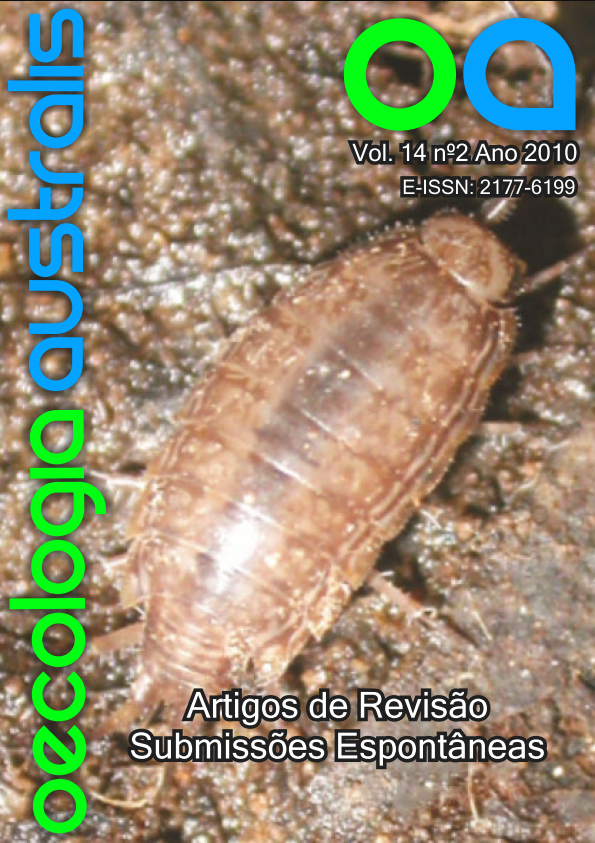MARINE BIOINVASIONS: HARD BOTTOM EXOTIC BIVALVES AND THEIR INTERACTIONS WITH THE RECEIVING COMMUNITY.
Keywords:
Bioinvasion, bivalvia, competition, predation, spatial heterogeneity.Abstract
Research on invasive species has increased over the past few years, since onus generated by these species can result in economic, ecological and social damage. Rocky shore marine bivalves, introduced in many parts of the world, can influence ecological relationships among native species and modify the structure and development of receiving communities. Therefore, the goal of this study is to summarize the available information in the literature related to rocky shore marine bivalve introductions and their influence on the ecological relations among the receiving community organisms. Among these, the competition by substratum will be analyzed since it is a limiting resource on rocky shores that could create a spatial segregation between native and exotic species. However, some invasive species can function as ecosystem engineers providing secondary space and microhabitats, besides increasing local diversity. In addition, once established in their new environment, exotic bivalves can be incorporated to the local food chain as prey, causing modifications in the diet and patterns of food preference of native predators. The majority of the research studies have examined the records of introduction, distribution, structure and population dynamic of the invasive bivalve species. The interactions established among rocky shore invasive bivalves and the receiving community is poorly studied; however, in the past five years there has been an increasing interest in this subject. Mytilus galloprovincialis is the best studied invasive bivalve. In Brazilian rocky shores five exotic bivalve species have been identified (Perna perna, Isognomon bicolor, Mytilopsis leucophaeta, Crassostrea gigas e Myoforceps aristatus). Despite the existence of studies (theses, dissertations and monographs) related to these species ecology in Brazil, few are available as scientific papers. During this review it was observed that the effects of invasive bivalves seem to vary according to the invaded site. Therefore, these studies deserve special attention from the Brazilian scientific community. The research on these invasive species are extremely important to evaluate the possible impacts caused by them and to identify the most sensible and potentially threatened natural resources, in order to develop control plans and, when possible, eradicate the exotic species.


